Pop Culture
‘The Exhibit’ Recap: In the Reality Show’s Fourth Episode Judges Clash Over Beauty and Justice
This week, the hunt for the next great artist leads with a justice-themed commission.
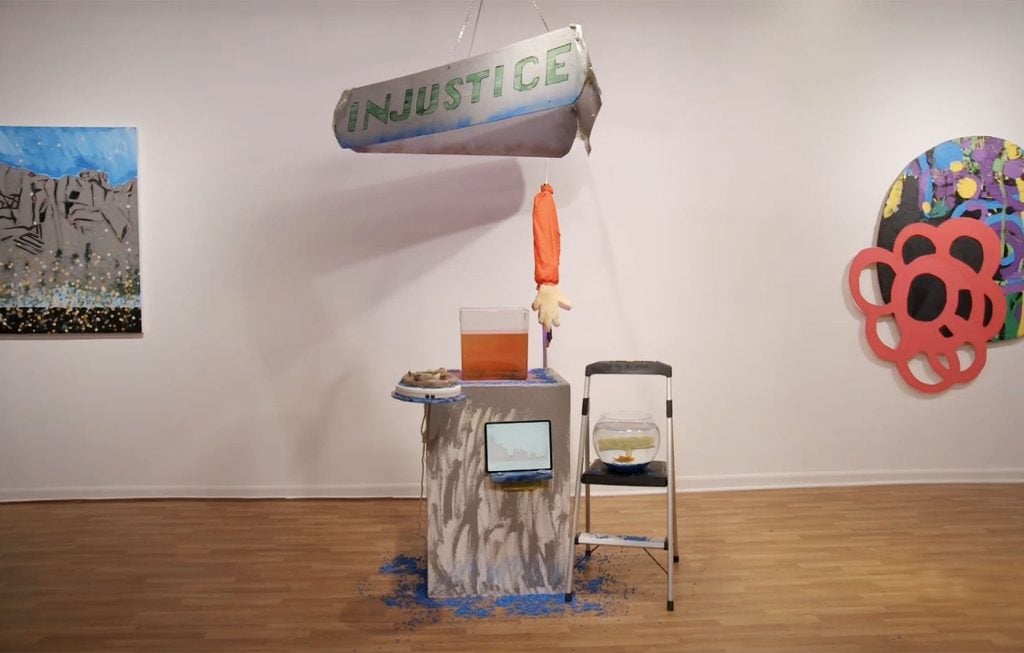
This week, the hunt for the next great artist leads with a justice-themed commission.

Min Chen

On the heels of last week’s timely commission about the pandemic, the fourth episode of The Exhibit, MTV and the Hirshhorn’s hunt for the next great American artist, is asking our contestants to develop pieces on the urgent theme of justice.
How do they see justice as artists? It’s a particularly pertinent subject this week as a group of A.I.-generated images imagining the arrest and incarceration of former U.S. president Donald Trump circulates widely. But the nation has had a longer, far more tangled relationship with justice, or in fact, injustice.
Consider the rates of police brutality against Black people, which Jamaal Barber is attempting to address with his painted wood collage centered on the 1999 killing of Amadou Diallo. Or the fact that this same historic violence has removed Black men from their families, as Jennifer Warren is capturing in her oil painting, rendered to read like a comic strip.
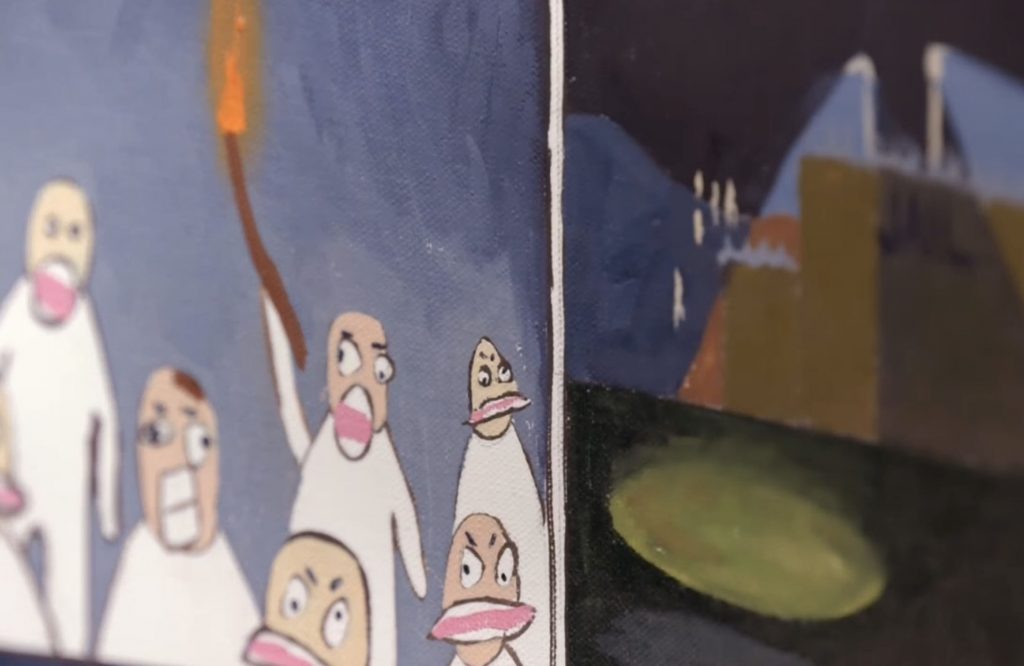
Detail of Hearse Driver (2023) by Jennifer Warren. Photo: Screenshot from The Exhibit, episode four.
There’s also the blighting of the Lakota peoples’ Six Grandfathers rock, known today as Mount Rushmore, which Frank Buffalo Hyde is tackling in a restorative landscape pointedly titled No More Rushmore. “Justice,” he said, “is to not have that rock defaced.”
Misha Kahn, meanwhile, is centering environmental justice with a mixed-media sculpture that draws attention to the looming extinction of the vaquita, a species of porpoise. It’s a work that requires him to pour expanding foam (emphasis on expanding) into an inflatable dolphin-shaped pool toy and, well, you can imagine how that goes.
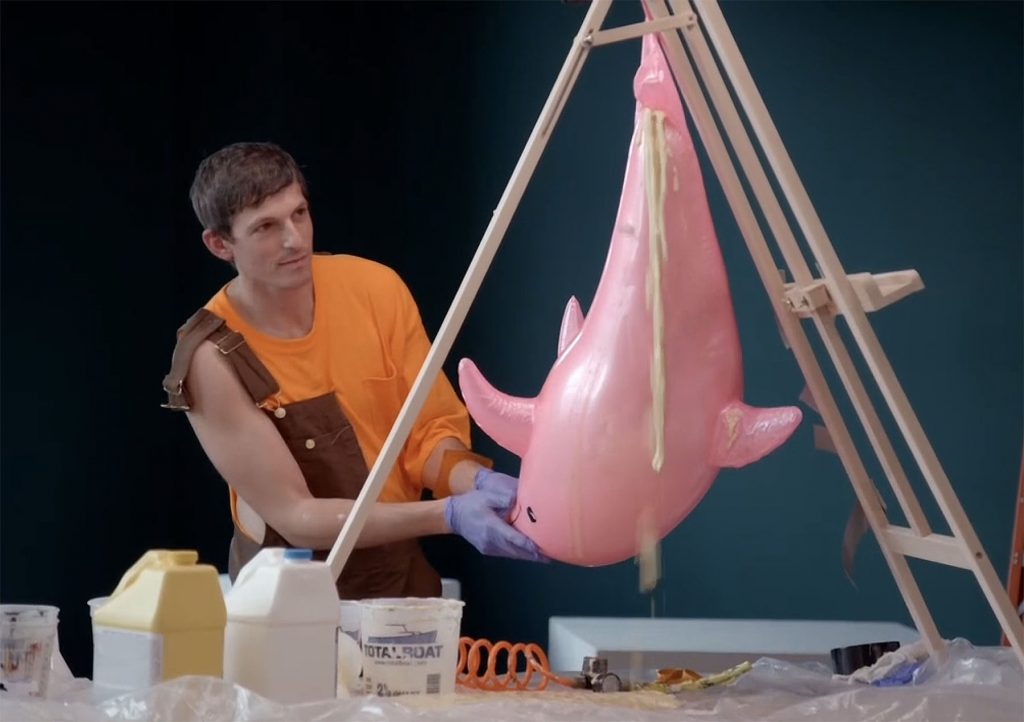
Misha Kahn filling a pool toy with expanding foam. Photo: Screenshot from The Exhibit, episode four.
Other pieces explore more sweeping injustices. Baseera Khan’s soft sculpture of seats, joined in a unity ring, questions “who gets a seat at the table and who doesn’t,” while Clare Kambhu’s acrylic canvas, featuring school chairs set askew, foregrounds educational institutions as potentially oppressive forces on their students.
Jillian Mayer’s piece takes aim at the 24-hour news cycle and social media ecosystem, and how they profit from their audience’s moral outrage. Her mixed-media installation goes big on both mixed and media, being constructed with “wood, paint, motors, chains, fish, oysters, dirty water, epoxy clay, just whatever I need to get it done.”
“This is not a beautiful art piece,” she added. “It’s more of a process piece.”
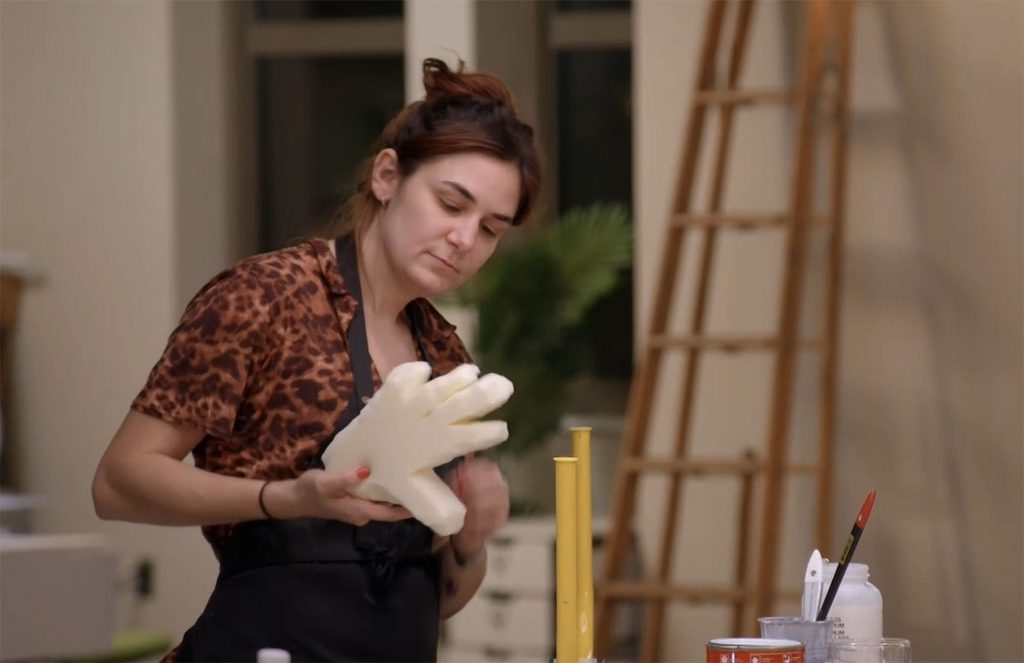
Jillian Mayer creating an element of her mixed media installation. Photo: Screenshot from The Exhibit, episode four.
And guys, we have to talk about Mayer’s work. Her ideas may be pretty robust, but the execution of her pieces continue to lack finesse, bearing out guest judge Sarah Thornton’s previous critique of her as “an interesting conceptualist who doesn’t like making things that much.”
Or perhaps Mayer’s conceptual art, centered as it is on in-person interaction and engagement (see: episode two’s Slumpie 143), doesn’t translate across the medium of T.V. As it is, it gives off tampon-in-a-teacup vibes—particularly with this latest commission’s giant signs that blatantly read “OUTRAGE” and “MORAL PANIC”—and at the very least, it’s not great to look at.
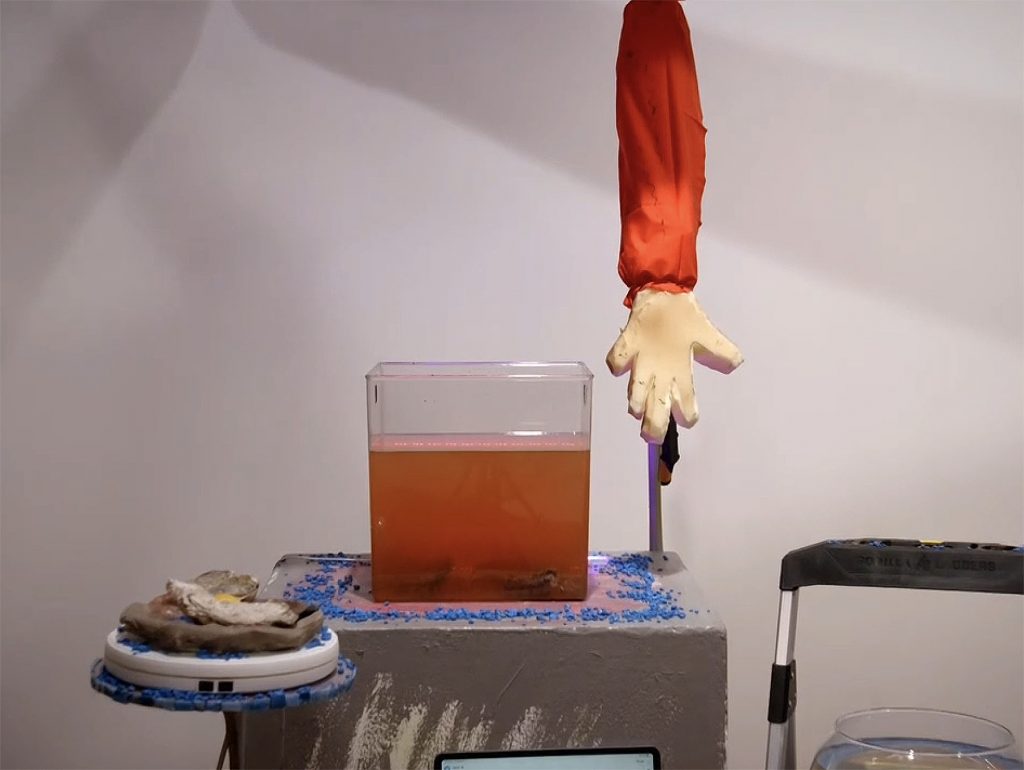
Detail of Untitled (2023) by Jillian Mayer. Photo: Screenshot from The Exhibit, episode four.
Host Dometi Pongo says as much at the judges’ critique session, calling Mayer’s untitled final work “grotesque.” Series judge Melissa Chiu argued that beauty is not a key criterion when it comes to understanding or appreciating contemporary art.
“But looking good is still something,” said guest judge Kenny Schachter.
“Looking good is something, but it’s not about the beautiful, the pretty… it’s not all about that,” Chiu responded.
“No, but it’s not not about that,” Schachter countered.
You get the idea. Mayer’s work doesn’t land, and neither does Barber’s clumsy abstraction nor Khan’s metaphorical sculpture. But the panel praises Warren’s painting for its comic strip format and message, Kahn’s sculpture for its “weirdness” and “good production value,” and Buffalo Hyde’s landscape for its powerful erasure of an oppressive symbol that’s only let down by his use of spray paint.
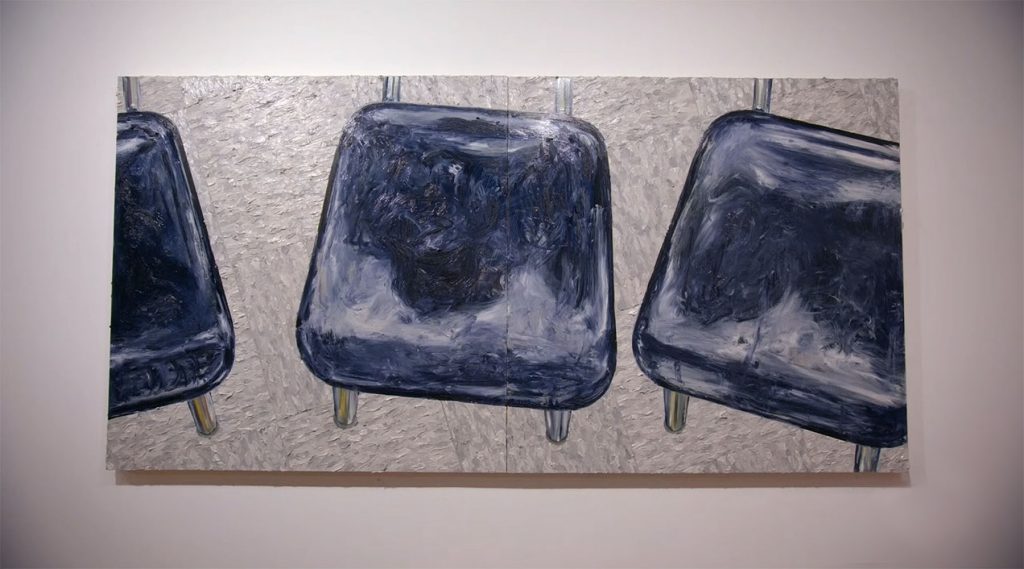
Clare Kambhu, Seating Arrangement (2023). Photo: Screenshot from The Exhibit, episode four.
Kambhu’s painting is deemed her most successful work and the week’s winning commission. Asked earlier by guest judge Adam Pendleton whether she was an artist or an educator, Kambhu insisted she was both—an intertwined role that comes across, Chiu added, in her “perspective on the importance of education and how it doesn’t always fulfill its promise.”
Plus, the canvas, evocative in detail and heavy in what’s left unsaid, just looks good.